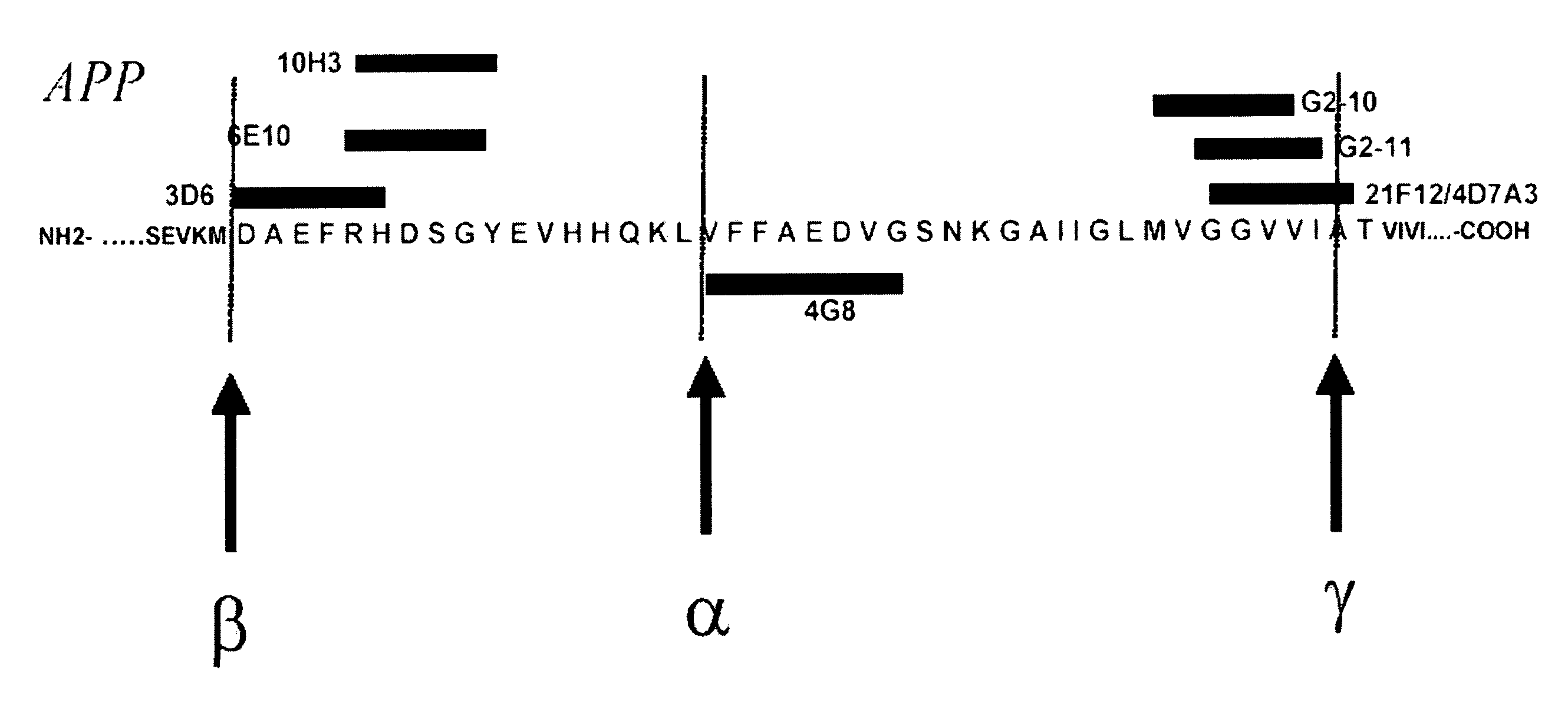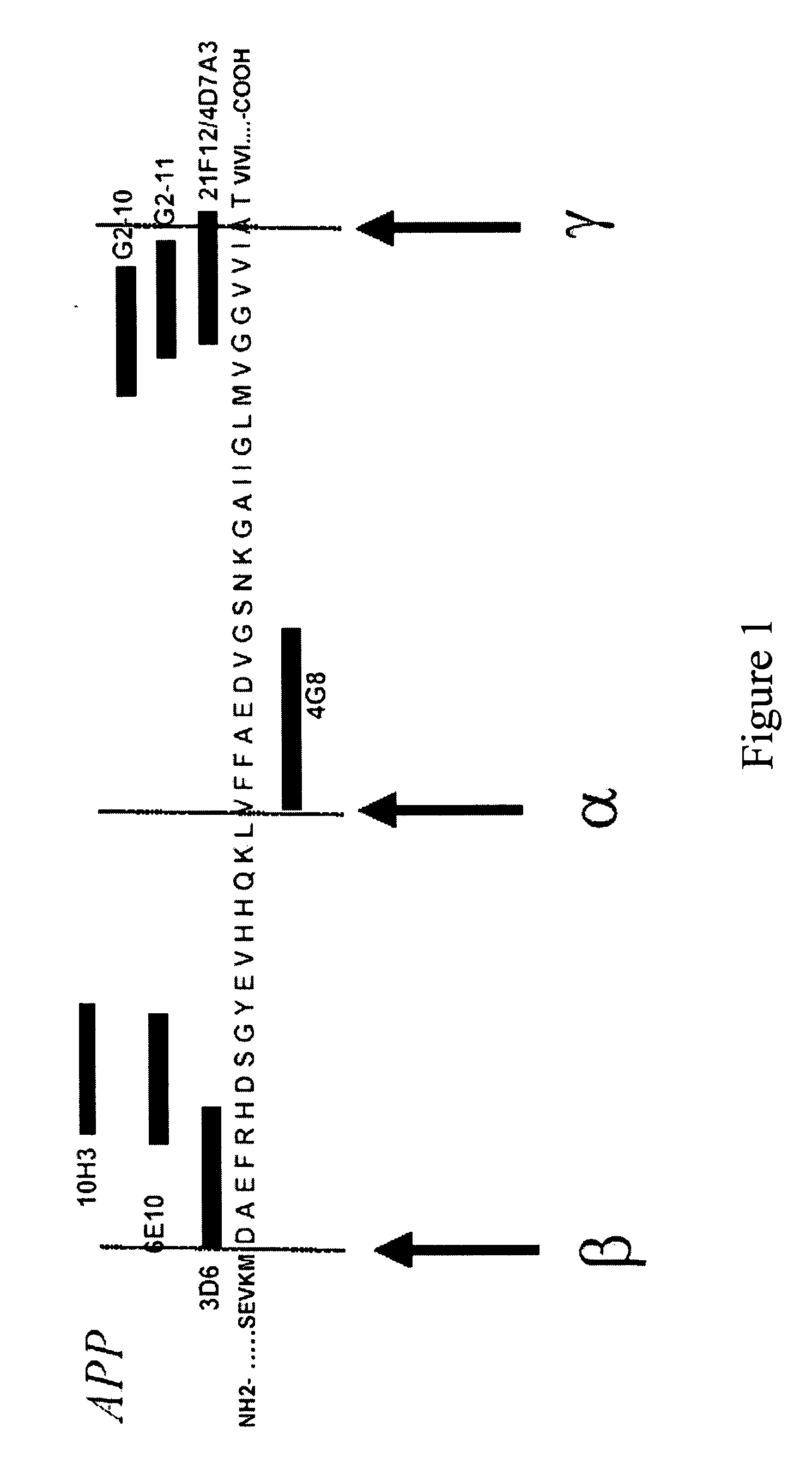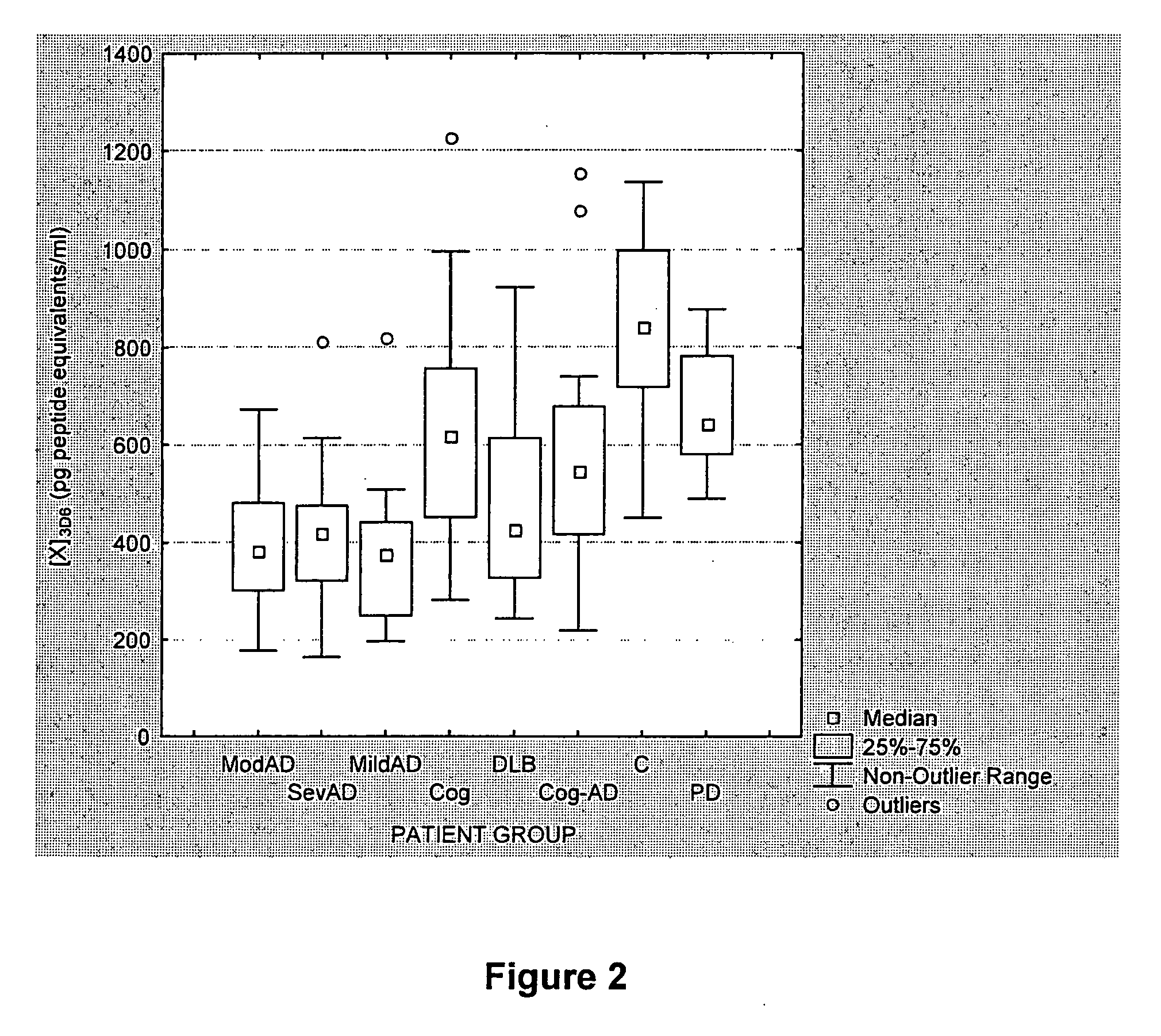Method for the prediction, diagnosis and differential diagnosis of Alzheimer's disease
a technology for alzheimer's disease and diagnosis, applied in disease diagnosis, material testing goods, instruments, etc., can solve the problems of severe (potentially lethal) hypersensitivity reactions, many cases of dlb still misdiagnosed as alzheimer's disease, and many cases of dlb misdiagnosis
- Summary
- Abstract
- Description
- Claims
- Application Information
AI Technical Summary
Benefits of technology
Problems solved by technology
Method used
Image
Examples
example 1
Epitope Mapping of the Monoclonal Antibodies Used in the Present Invention
1. Determination of the Binding Specificities of Monoclonal Antibodies 3D6, 6E10 and 4G8 in ELISA
[0124] Three β-amyloid antibodies, 3D6 (Elan Pharmaceuticals, South San Francisco, Calif., USA), 6E10 and 4G8 (Signet Laboratories, Dedham, Mass., USA) were tested in ELISA for immunological binding with different β-amyloid peptides truncated at their N-terminal end: Aβ(1-42), Aβ(2-42), Aβ(3-42), Aβ(4-42), Aβ(5-42), Aβ(8-42), Aβ(9-42). Synthetic peptides were obtained from Bachem (Heidelberg, Germany), Neosystems (Strasbourg, France), or AnaSpec (San Jose, Calif., USA). The ELISA format and its characteristics have previously been described in detail (Vanderstichele et al., 2000). In short, plates were pre-coated with the 3D6, 6E10 or 4G8 monoclonal antibody, specific for the N-terminus of Aβ42, as capturing antibody. To each well, 100 μl of blank or peptide sample were added and incubated for three hours. After...
example 2
Analysis of the Aβ Peptides Binding 3D6 and the aβ Peptides Binding 4G8 or 6E10 in CSF Samples Obtained from Subjects Suffering from Memory Impairment or Dementia
1. Subjects
[0130] A study was carried out based on CSF samples archived at the Sahlgren's University Hospital, Göteborg, Sweden, including 166 subjects. For 12 CSF samples, not all parameters were determined. Exclusion of these partial results did not affect the final analysis. The results of 154 samples are discussed here, including the following patient groups: 18 patients with moderate AD (modAD), 21 patients with severe AD (sevAD), 20 patients with mild AD (mildAD), 39 patients with cognitive impairment, 12 patients with dementia with Lewy bodies (DLB), 15 patients with Parkinson's disease (PD) and 29 control subjects (C). All patients with AD satisfied the NINCDS-ADRDA criteria (McKhann et al., 1984). For the patient group with cognitive impairment, no symptom other than memory impairment was reported or identified ...
example 3
Analysis of the Levels x and y of Specific Aβ Peptides in Samples Obtained from Subjects Suffering AD
1. Subjects
[0139] CSF samples from patients with AD (n=22) and non-demented controls (n=20) were provided by the Sahlgren's University Hospital, Göteborg, Sweden. They were collected for the purpose of routine diagnostic procedure from patients diagnosed according to the generally accepted criteria of AD, ICD-10 (World Health Organization, 1992) and National Institute of Neurological and Communicative Disorders and Stroke-Alzheimer's Disease and Related disorder Association (NINCDS-ADRDA criteria; McKann et al., 1984). The control group consisted of individuals without histories, symptoms, or signs of psychiatric or neurological disease.
[0140] The Ethics Committees of the Universities of Göteborg, Sweden, approved the study. All patients (or their nearest relatives) and controls gave informed consent to participate in the study, which was conducted according to the provisions of ...
PUM
| Property | Measurement | Unit |
|---|---|---|
| Volume | aaaaa | aaaaa |
| Volume | aaaaa | aaaaa |
| Volume | aaaaa | aaaaa |
Abstract
Description
Claims
Application Information
 Login to View More
Login to View More - R&D
- Intellectual Property
- Life Sciences
- Materials
- Tech Scout
- Unparalleled Data Quality
- Higher Quality Content
- 60% Fewer Hallucinations
Browse by: Latest US Patents, China's latest patents, Technical Efficacy Thesaurus, Application Domain, Technology Topic, Popular Technical Reports.
© 2025 PatSnap. All rights reserved.Legal|Privacy policy|Modern Slavery Act Transparency Statement|Sitemap|About US| Contact US: help@patsnap.com



